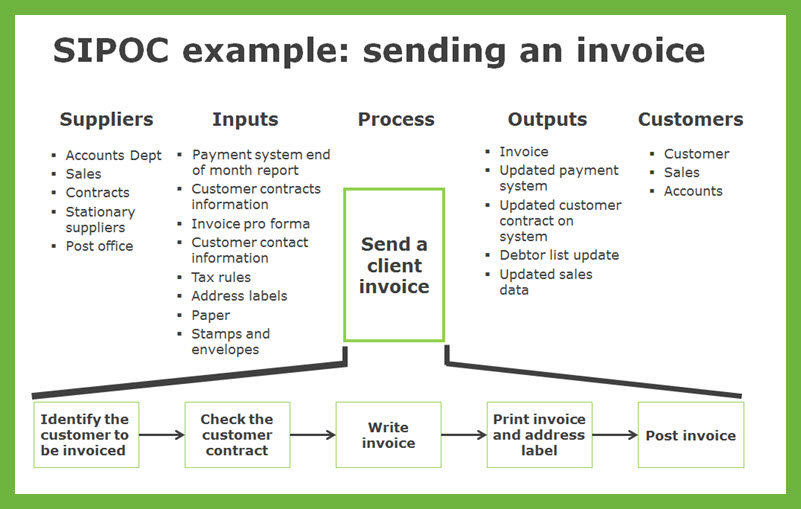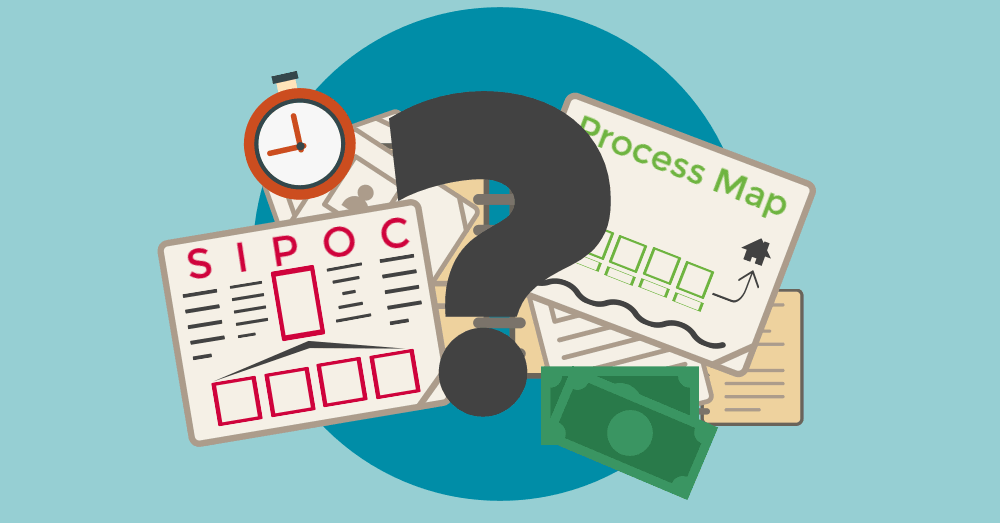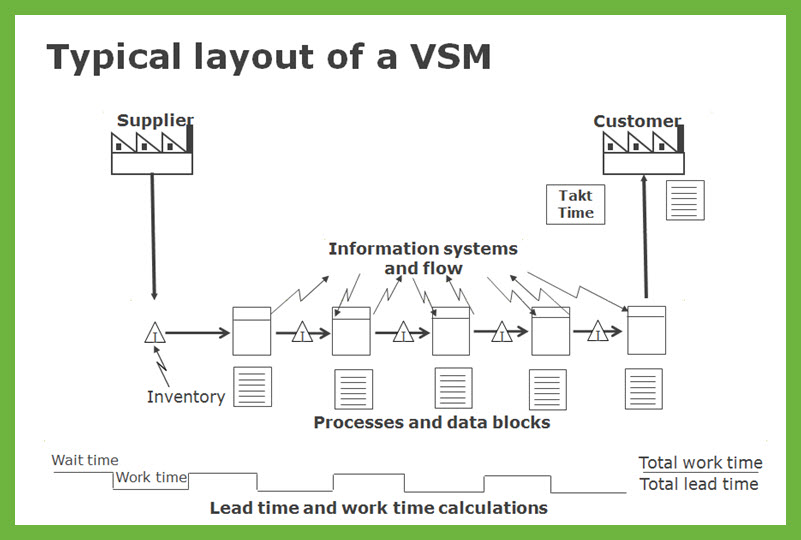- Jules Attard
- October 16th, 2014
This is one of the most common questions I am asked by newly-training Green and Black Belts. These two LSS tools appear very similar. So similar, in fact, that it seems a waste to use them both.
So why do we create both in our projects?
Let’s first take a look at what each of these tools is, and what it does.
The term SIPOC stands for Suppliers – Inputs – Process – Outputs – Customers. A SIPOC diagram is a map showing a full process at a high level in no more than 6-8 steps. It identifies the inputs necessary for that process to operate, and who supplies them; and the outputs of the process, and who consumes them. This latter stage is crucial as it identifies who says the outputs are satisfactory.

In a Lean Six Sigma project, a SIPOC diagram is completed during the Define phase for a number of reasons. In addition to giving a high-level view of the process, the SIPOC diagram helps to answer the following questions, all of which must be understood before starting to gather data on the process:
- When does the process begin and end: What is the SCOPE?
- Who is affected by my project – suppliers and customers: Who are the STAKEHOLDERS?
- What are the inputs, outputs and key process steps: What could we MEASURE?
- What is this project working on: How can we COMMUNICATE about the project?
When a team reaches the Measure phase, they are advised to complete another process map – only in more detail this time. This might be a Value Stream Map (VSM), or some other kind of map such as a swimlane diagram. Let’s look at a VSM, although the points made apply to any other kind of detailed process map as well.
The VSM shows the flow of the product or service through the process, and the information flows which manage the process. It shows the inputs and outputs at every step of the process, and records measurements about them.
So if the VSM contains all this, the question is often asked, why do we need to complete a SIPOC at all? It may seem a little like a duplicated effort, but it’s not.
There are three good reasons to complete a SIPOC before starting a VSM:
- It isn’t always clear where the boundaries of the process are. In many situations, business processes appear to flow seamlessly from one to another. Creating a SIPOC with clear start and stop points quickly brings clarity to this question.
- It establishes what level of detail is needed for the VSM, and whether all of it needs to be mapped. A team can take a considerable time to map a process in detail, and not all of this effort is used to solve the business problem. After creating a SIPOC, a team can zoom in on the parts of the end-to-end process most relevant to the problem, and only map that in detail.
- The SIPOC makes teams consider the end-to-end process before they dive into the detailed map; this means they’re unlikely to neglect the views of a critical stakeholder.
The other way to challenge whether both tools are necessary is to ask whether the SIPOC alone is sufficient for your needs. Do you need a process map too? In my view, the answer is always yes.
The SIPOC tells you what the high level steps of the process are, but does nothing to identify the possible wastes. Which process steps are generating more defects? Where are the delays? Where have rework loops, expediting processes and work-in-process built up? The detailed process map identifies these problems and so leads the project team to find the root causes it must tackle in order to make process improvements.
That is why you need both a SIPOC and a process map.



